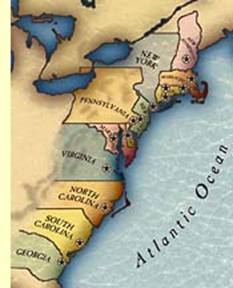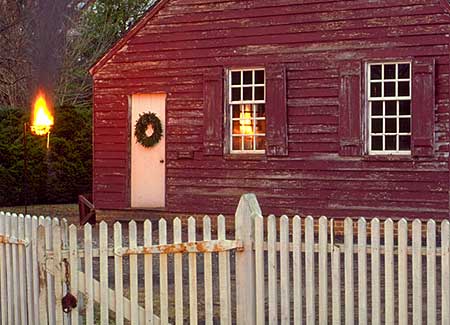|
Process Task |
Does Not Meet Expectations
0-1 Pts |
Meets Expectations 2-3 Pts |
Exceeds Expectations
4-5 Pts |
Point Score |
|
Newspaper Article |
Newspaper
article is incomplete or contains only 1-2 historical details. Newspaper
article is not factual. Article is not
edited, no paragraph structure, many spelling errors. |
Newspaper
article is complete and contains only 3-4 historical facts Newspaper
article is factual. Article is
edited and contains appropriate paragraphs and few spelling errors. |
Newspaper
article is complete and contains 5-7 historical facts Newspaper
article is factual. Article is
edited, has appropriate paragraphs and no spelling errors. |
|
|
Group presentation |
Student is
able to locate important information only with significant help from others. Student notes
are disorganized or unrelated to topic areas. |
Student is
able to locate important information with little assistance. Student notes
are on-target and appropriately organized in most topic areas. |
Student is
able to locate important information with little assistance and is able to
help others. Student notes
are on-target and appropriately organized in all topic areas. |
|
|
Creative Representation of category |
No object was used to represent revolutionary category |
Student uses minimal creativity to represent category through printed
photos |
Student uses creatively through his/her category’s culture: food attire, music, dance, photos, art,
etc. |
|
|
Presentation |
No colonial
attire or even a drawing or photo representing what colonial people
worn during that period Group only
addresses 2-3 questions asked on research Student is
not well-prepared to give presentation. |
No colonial attire, but photo representing what colonial people wore. Group addresses 4-5 questions asked on research Student is prepared, but consistently has to look at his notes, which
disrupts the flow of information |
Colonial attire and/or drawings & photo representing clothing of
the era Group addresses 6-7 questions asked on research Student is prepared, presentation is well organized and flows easily |
|
|
Overall Participation |
Student does
not participate in classroom discussion related to this project. Student asks
questions not related to tasks at hand. |
Student
participation in class discussion shows an appropriate understanding of
the project and connections to other activities in this unit of study. Student asks
appropriate questions related to this project. |
Student
participation in class shows an appropriate understanding of the project
and connections to other activities in this unit of study. Student asks
appropriate questions related to this project and makes original suggestions. Student is
able to make meaningful connections, draw conclusions, generate original
ideas from information gathered. |
|
|
Total point score |
|
|
|
|
|
A WebQuest on the Colonial Times of American Revolution Designed by Nicole Kopacz
Introduction | Task | Process | Evaluation | Conclusion | Credits | Teacher Page
Now that you've begun your study of America during Colonial times, you might wonder what it was REALLY like during those tumultous times. Why were the Loyalist's so faithful to Britain? What did a Redcoat's uniform look like? What toys did children play with and how did they learn? How did the blacksmith create his trade? What kinds of food did they eat and whose job was it to prepare? What were the living conditions of the slaves? These are just some of the questions that you can find the answers to! This webquest will provide you with internet resources and give you a real opportunity to explore the daily life of colonial times and how they impacted the Revolutionary War. Welcome to colonial times! What was it really like to live during colonial times? Well, your about to find out . . . In this webquest you will assume the role of a unquie category of people that lived during colonial times. You will travel back in time to research what colonial life was all about. During your journey you will gather information about one famous person in your category and do an artful and creative presentation on what you find. For your presentation remember to BECOME that person in history. Try to illustrate exactly how they looked, talked and walked. You might even meet George Washington if you're lucky.
The Task Students will research a category of people that lived during colonial times. Each category role will be researched using resources provided in the webquest. Students will need to research their category in-depth as well as one famous person within it. The three main research goals that you will need to accomplish are: researching background infomation on your category, their perspective of the revolutionary war and how they impacted it. There will be four requirements to complete during your journey of findings. 1. First, thoroughly research your category and use a concept map to organize your thoughts and ideas. 2. Assume the role of your category by dressing up in traditional colonial attire and present your findings to the class. 3. Find a creative way through art, music, food, sculpture, pictures, crafts, artifacts, etc. to physically represent one aspect of your category. Please try to be as creative as possibly and use any personal insights that you may have. This requirement is REALLY open-ended, so surprise me! 4. The final requirement is to write a newspaper article from a British journalistic's perspective on what life was like during colonial times of the Revolutionary War. Your newspaper article will be evaluated by the five writing traits and will need to be in final draft form. You will need to include 7 historical facts, one from each colonial category. Please try to be in-depth by bringing your own experiences into your message. HAVE FUN!!!! The Process 1. First, students will pick three categories that interest them the most. The teacher will then assign categories to groups based on student interest. A) Loyalists B) Patriots C) Children D) Slave Trade E) Women F) Trades G) Arts and Crafts 2. Once you've picked a role to play you will need to complete in-depth research of your character, using resources provided in the webquest. 3. Please connect to'Questions to Research' page to help you through your research journey. 4. Once you have compiled a wealth of information you will need to organize it on your concept map (this is not a requirement that you will be evaluated on, just a helpful tool). 5. Next, your group will need to start organizing thoughts and ideas into a classroom presentation. You will also need to brainstorm ideas on what materials you will need to find or make to represent your cultural attire. 6. Then, you will need to find a creative way to represent your category. In this part, I will expect your creativity to shine. Some ideas might be . . .
7. Next. you will need to present all your information to the class. 8. Finally, after your presentation is finished you will write a newspaper article from a British journalistic's perspective about what life was like during colonial and theRevolutionary War. Remember to write the article from a British perspective. Here is a flow chart to get you started. This will need to be edited and revised for the final draft and should include 7 historical facts, one from each colonial category. RESOURCES
The
students
will be evaluated on four requirements: group presenation
with colonial attire, creative representation of category, newspaper
article, and overall participation by yourself and by the teacher.
The teacher will give a group score for the
presenation and creative represenation. There will be a separate
individual grade given for overall participation through
self-assessment, group assessment and teacher assessment. There
will also be an individual grade for the newspaper article. Your
point total will be graded in the following format below: Overall, I hope that you have enjoyed your journey through colonial times. I'm sure that all of you have learned a tremendous amount of knowledge and now have a deeper appreciation for that period in history. So I wonder what happens next. . . hmmm.... maybe we should find out !!!!!! I would like to thank Colonial Williamsburg for allowing me to use their photographs to supplement the aestetics of my webquest. I would also like to thank my husband, Fraser Horn in helping and revising. Links to my resources:
|



